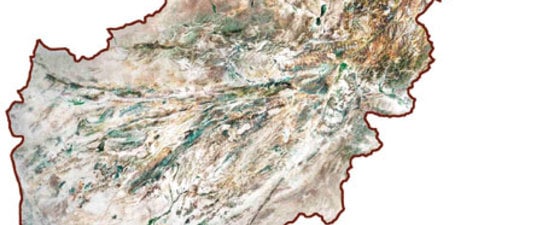Ravaged by years of war, geo graphic ally disadvantaged, land locked and mountainous and carrying genuine fears of political instability; hardly incentives to attract investors. However, state-owned China National Petroleum Corp (CNPC), well accustomed to such obstacles internationally and on a quest to secure future energy supplies, has accepted the odds and won the first acreage to be awarded in Afghanistan through a tender process. CNPC beat off competition from four other bidders for a contract to explore for and produce oil in three blocks in north-west Afghanistan. The Kashkari, Bazarkhami and Zamarudsay blocks contain an estimated 80 MMbo in a remote part of the country thought to hold a total of about 1.6 Bbo and 16 Tcf gas.
The three blocks are in the southern edge of the Amu Darya Basin, a prolific hydrocarbon-bearing region found in portions of Turkmenistan, Uzbekistan and northern Afghanistan. The basin has a Paleozoic to Triassic basement complex of igneous and metamorphic rocks, overlain by Jurassic to Paleogene terrigeneous sedimentary rocks, with a cover of Neogene to Holocene orogenic clastics. The most important reservoir rock in these three blocks is Lower Cretaceous Hauterivian sandstone, found at depths of 1,000 to 1,500m. Productive Lower Cretaceous Albian and Aptian sandstones also may be encountered at shallower depths.
The geology of Afghanistan is structurally complicated, consist ing essentially of a succession of narrow north-east trending terrains of continental fragments of Paleozoic to Tertiary age. Oil and gas exploration commenced in Afghanistan in 1956 and the first oil field, Angoat, was discovered in 1959. Subsequently, the Yatimtaq gas field was discovered in 1960 followed by Khwaja Gogerdaq gas field in 1961 and Khwaja Bulan gas field in 1964. Despite the concentration of exploration activity in the Amu Darya Basin, the part of the basin in Afghanistan is relatively underexplored when compared to the Turkmenistan and Uzbekistan counterparts. CNPC is already producing oil from the basin across the border in Turkmenistan, so winning Afghanistan’s first exploration license to be tendered internationally in four decades gives the company a strong foothold in the country.
Afghanistan signed a Memorandum of Understanding on cooperation in the petroleum sector with Norway in 2007, covering the development of a legal framework, the provision of consultancy for a tendering process and organizational capacity building. The passing of The Hydrocarbon Law by the Parliament in January 2009 was a milestone in the Afghan petroleum sector. Even so, the challenges for any company attempting large-scale investment in Afghanistan are many, typified by the admission that there is almost no oil infrastructure in the country. The difficulties were revealed in a licensing round question-and-answer sheet on the Ministry of Mines website that stated: “No oil pipeline exists in Afghanistan other than the 3 km, 6” line from Angoat to the bottom of the hill nearby.” The size of the task facing a new investor is supported by the fact that “no true full-fledged development plan has ever been implemented.” The first Afghan Hydrocarbon Bidding Round was a failure, with one bid received in February 2010 for the three blocks on offer and that bid was rejected. Against this background Kabul, perhaps rather optimistically at this time, believes with the right exploration company the Amu Darya region can become a “successful” oil and gas province. With this in mind, the Ministry of Mines has indicated it is formulating plans to auction two further oil field contracts, one near Mazar-e-Sharif in northern Afghanistan and another at Herat in the north-west.
Whether Afghanistan can ever support a real oil and gas industry remains to be seen. Its geology is structurally complicated and, although the blocks on offer are in the relatively peaceful north, these challenges are compounded by potential security risks and by problems determining whose consent is required for a particular resource to be accessed. Though major progress has been made in the technical expertise of the Ministry of Mines, members of parliament have limited knowledge about oil and gas bidding procedures, as well as the larger issues of managing hydrocarbon revenues effectively. There is no up-to-date master plan for the energy sector. As a result, there is a risk that the internal external coordination of hydrocarbon projects could be driven by the interests of single actors, either Afghan or international, rather than by a clearly defined and agreed set of goals.





